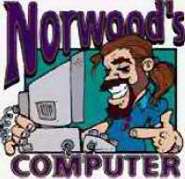October 15, 2003
GA E-voting problems
Here is an excellent article on electronic voting machines. Unfortunately, we have to get this information from Europe, as the topic is apparently not important enough for papers in the US to cover.
It would be very simple to solve this problem permanently: all we need is a hard copy, a print out which the voter can look at to confirm her vote, and which she can then deposit in an old fashioned ballot box. These hard copies could be used to spot check the accuracy of the electronic tabulations and could also be used in a recount. Electronic voting machines are all designed around a standard PC. Adding a printer can not be too difficult, whether the manufacturers will admit it or not, and it creates a perfect audit trail.
Something very odd happened in the mid-term elections in Georgia last November. On the eve of the vote, opinion polls showed Roy Barnes, the incumbent Democratic governor, leading by between nine and 11 points. In a somewhat closer, keenly watched Senate race, polls indicated that Max Cleland, the popular Democrat up for re-election, was ahead by two to five points against his Republican challenger, Saxby Chambliss.Posted by Norwood at October 15, 2003 09:11 PMThose figures were more or less what political experts would have expected in state with a long tradition of electing Democrats to statewide office. But then the results came in, and all of Georgia appeared to have been turned upside down. Barnes lost the governorship to the Republican, Sonny Perdue, 46 per cent to 51 per cent, a swing of as much as 16 percentage points from the last opinion polls. Cleland lost to Chambliss 46 per cent to 53, a last-minute swing of 9 to 12 points.
......There were also big, puzzling swings in partisan loyalties in different parts of the state. In 58 counties, the vote was broadly in line with the primary election. In 27 counties in Republican-dominated north Georgia, however, Max Cleland unaccountably scored 14 percentage points higher than he had in the primaries. And in 74 counties in the Democrat south, Saxby Chambliss garnered a whopping 22 points more for the Republicans than the party as a whole had won less than three months earlier.
Now, weird things like this do occasionally occur in elections, and the figures, on their own, are not proof of anything except statistical anomalies worthy of further study. But in Georgia there was an extra reason to be suspicious. Last November, the state became the first in the country to conduct an election entirely with touchscreen voting machines, after lavishing $54m (£33m) on a new system that promised to deliver the securest, most up-to-date, most voter-friendly election in the history of the republic. The machines, however, turned out to be anything but reliable. With academic studies showing the Georgia touchscreens to be poorly programmed, full of security holes and prone to tampering, and with thousands of similar machines from different companies being introduced at high speed across the country, computer voting may, in fact, be US democracy's own 21st-century nightmare.
In many Georgia counties last November, the machines froze up, causing long delays as technicians tried to reboot them. In heavily Democratic Fulton County, in downtown Atlanta, 67 memory cards from the voting machines went missing, delaying certification of the results there for 10 days. In neighbouring DeKalb County, 10 memory cards were unaccounted for; they were later recovered from terminals that had supposedly broken down and been taken out of service.
It is still unclear exactly how results from these missing cards were tabulated, or if they were counted at all. And we will probably never know, for a highly disturbing reason. The vote count was not conducted by state elections officials, but by the private company that sold Georgia the voting machines in the first place, under a strict trade-secrecy contract that made it not only difficult but actually illegal - on pain of stiff criminal penalties - for the state to touch the equipment or examine the proprietary software to ensure the machines worked properly. There was not even a paper trail to follow up. The machines were fitted with thermal printing devices that could theoretically provide a written record of voters' choices, but these were not activated. Consequently, recounts were impossible. Had Diebold Inc, the manufacturer, been asked to review the votes, all it could have done was programme the computers to spit out the same data as before, flawed or not.
Astonishingly, these are the terms under which America's top three computer voting machine manufacturers - Diebold, Sequoia and Election Systems and Software (ES&S) - have sold their products to election officials around the country. Far from questioning the need for rigid trade secrecy and the absence of a paper record, secretaries of state and their technical advisers - anxious to banish memories of the hanging chad fiasco and other associated disasters in the 2000 presidential recount in Florida - have, for the most part, welcomed the touchscreen voting machines as a technological miracle solution.
